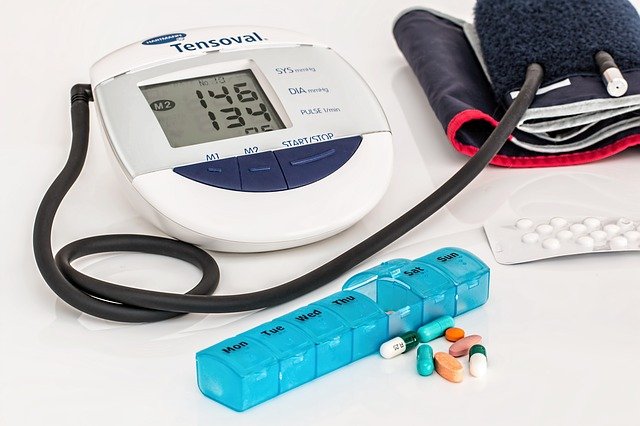Diagnosis Methods: What are the Most Common Ones and How Do They Work?

Any healthcare professional can tell you the importance of accurate and efficient diagnosis in medical treatment. Most treatment options can’t be identified prior to knowing the exact condition a patient has. As such, diagnosis is often the first and most crucial step in the treatment of individuals. It’s also crucial this is done with speed, so things can be done to treat a patient’s condition before symptoms progress. Beyond this, knowing what kind of a problem they’re dealing with can do wonders for a patient’s mental being, as well. Fortunately, today, there are a wide array of methods at doctors’ disposal when diagnosing illnesses. However, the fact that different conditions present themselves in different ways in the human body mean it is important to be familiar with as many methods of diagnosis as possible. For a brief overview, here are some of the most common means of diagnosing diseases right now, and how they function.
Saliva Testing
Recently, there has been much discussion over the validity of saliva testing for the rapid diagnosis of infectious diseases. This is because there has been substantial interest in developing a saliva-based testing method for COVID-19. Saliva-based tests have several distinct advantages over the throat swabbing method most commonly used in COVID testing. First, it is substantially low-cost in comparison with other methods of diagnoses. Secondly, they are easy to administer, since all the patient is required to do is spit into a test tube. As a result, a saliva collection kit can be operated easily, with limited training. Because of this, they are also significantly more comfortable to use than throat swabs, which can cause some patients to activate their gag reflex. In addition, they often do not require temperature controlling. Consequently, there is much less chance of samples becoming contaminated, prior to it being delivered to a lab.
However, it is also fair to say saliva testing is severely limited in some respects. In particular, its reliability and overall accuracy in testing for infectious diseases is highly contested. It is therefore considered a somewhat crude method of testing for diseases, in comparison with other, more specialised tests. For COVID-19 then, most saliva testing has been done in conjunction with more reliable diagnostic methods. In spite of this, much progress has been made in developing the ability and accuracy of saliva tests, to the point where some can detect viral traces from as few of 200 copies of the virus per millilitre.
Blood Tests
Sampling your blood via a needle is one of the most straightforward ways of identifying any potential problems with your body. Due to the wide application of blood tests, they actually encompass several different diagnosis methods, depending on how the blood is analysed after the sample is taken. For example, the blood glucose test is one of the most reliable ways healthcare professionals can diagnose diabetes. By measuring your blood sugar after eating or drinking, it is possible to compare your glucose levels with healthy and diabetic individuals for reference. Naturally, blood tests are also an effective way of monitoring cardiovascular health. The blood cholesterol test is effective in diagnosing high levels of cholesterol, which can subsequently lead to other more serious issues like heart disease. The other most common kind of diagnostic blood test is the blood gases test. This measures the balance between oxygen and carbon dioxide in the bloodstream, as well as the pH balance. Serious imbalances in your blood’s pH levels can be indicative of respiratory and metabolic problems. It is important to remember, however, that your blood is sensitive to a huge variety of different factors. You should thus never jump to conclusions after diagnosing or being diagnosed, using a blood test.
Urine Tests
Urinalysis is another crucial tool for any diagnostician when analysing a patient. Your urine naturally contains waste substances taken from all over your body. As such, they often contain trace amounts of substances that are indicative of medical conditions. In particular, urinalysis is useful for monitoring the functioning of your kidneys. Persistently high protein levels in your urine can be an early-stage signifier of chronic kidney disease , for example. Another advantage of urinalysis is that it often detects signifiers of medical issues before patients start experiencing symptoms. They are thus one of the fastest diagnostic methods available.
Urinalysis first begins with studying its colour. Amazingly, much can be deduced from this step alone. Cloudy urine, for example, is often a sign of infection. Some diseases are even diagnosable because they lead to the production of oddly coloured urine. After this step, a chemical strip is dipped into the sample. These can check for a variety of things depending on the nature of the patient’s other symptoms. Finally, if results are inconclusive, small amounts of urine can be further scrutinised under a microscope. This can be used to detect things like blood cells, which may be indicative of kidney issues, or bacteria, which would also suggest the patient has developed an infection.
X-Rays
One of the most well-known form of diagnosis is the use of X-ray body imaging. In an X-ray test, the patient is placed in a machine which emits a small amount of radiation. This radiation then passes through the patient’s body, where an imaging machine maps the radiation inside of the patient. Because different areas of the body allow for different amounts of radiation to pass through, this can effectively create accurate scans of the inside of your body. As such, it can be an effective diagnostic tool for bone fractures, lung conditions, and cancerous tumours. They are also quick and painless to administer.
The most apparent disadvantage with this method is that using it inevitably requires exposing the patient to a certain amount of radiation. The amount of radioactive material absorbed during one X-ray test is insignificant, however, continued exposure to radiation can build up over time. You should thus try to avoid getting too many X-ray tests in your lifetime.




